The Utah Cutthroat Slam launched in 2016 with the goal of raising money to improve cutthroat fisheries throughout the state. Of course, a secondary goal was to introduce anglers to the West’s native trout, four subspecies of which call some of Utah’s most scenic waters home.
As the Slam moves into its seventh year, it has the financial wherewithal to fund several different projects throughout the state. While cutthroat restoration in Utah has largely been a success — as has been documented in other stories in Hatch Magazine — there’s still work to be done.
Viable conservation populations
An important part of restoring cutthroat across the West is the establishment of viable conservation populations of each subspecies. These populations have to remain genetically pure, which means they need a stream in devoid of other trout species. A conservation population like this is vital to preserving the genetics of these fish while other cutthroat trout vanish due to habitat degradation or species hybridization.
Establishing these conservation populations is where much of the current cutthroat restoration work is focused. Often, this work involves building barriers to separate cutthroat from other trout, treating streams with rotenone, and restoring stream habitat. Thanks to the Utah Cutthroat Slam, fisheries biologists with the Utah Division of Wildlife Resources (UDWR) now have the opportunity to restore habitat on a small headwater stream in the southern part of the state.
“The Cutthroat Slam certainly made (this project) a lot easier,” said Nic Braithwaite, Southern Region Fisheries Biologist with the UDWR. “I don’t know for sure if we would’ve done it otherwise. We probably could’ve found some money somewhere, but the Cutt Slam definitely made it a lot easier. A small project like this doesn’t fit as well on some of our other funding sources sometimes.”
The project involves Fish Creek, a thin blue line on the map that runs underneath I-70 not far from where it meets with I-15, in one of the lonelier parts of Utah. Fish Creek is a tributary to Clear Creek, which parallels I-70 for much of its length as it flows east before joining the Sevier River near Richfield, Utah. Clear Creek itself is a slightly larger river, but it’s notable mostly for its ease of access and decent fishing for smaller trout. You won’t find a monster fish in Clear Creek, but you’ll more than likely have the water to yourself.
Historically, Bonneville cutthroat were found in Clear Creek and its many tributaries. You’ll still catch them today, but the stream is dominated by brown and rainbow trout.
The fire
The Twitchell Canyon Fire, which burned in 2010, damaged much of the Fish Creek area. After the fire, of course, came the floods. The flooding caused major damage to the stream, eroding banks and eliminating the riparian habitat trout streams need to be truly successful.
The fire and flooding wiped out most of the fish in Fish Creek, which gave the UDWR the opportunity to reset the stream for Bonneville cutthroat.
“We used that as an opportunity to reintroduce the native bonneville cutthroat trout in there,” Braithwaite said. “After the fire wiped out most of those fish, we did some rotenone treatment on the remaining fish, and introduced the native and non-game fish. That was all completed around 2016.”
Since 2016, Fish Creek has offered fast fishing for genetically pure Bonneville cutthroat trout, even if they are on the smaller side. Even with the reintroduced native fish, though, the restoration work on Fish Creek isn’t complete.
Riparian habitat
In the fall of 2023, the UDWR will hire a conservation crew, which will plant native vegetation in the riparian zone along Fish Creek, according to Braithwaite.
“Really, we’ll probably rely mostly on them cutting willow and cottonwood stakes from existing plants on site, and then we’ll plant that in areas where we’re lacking in that stream,” Braithwaite said.
Willows support water quality by preventing sediment and other runoff from entering the stream, according to the Coastal Watershed Council. In addition, willows can provide new shaded areas for trout to live during the hottest parts of the year.
Protected from grazing
All the vegetation planting is of no use, of course, if it all gets munched on by cattle. Fish Creek flows through National Forest land, and there’s a current grazing lease along the stream. I’ve seen cattle decimate riparian restoration projects before, in eastern Utah specifically. The holder of this permit along Fish Creek, though, has volunteered to help the UDWR in preserving the newly planted vegetation.
“The [grazing] permittee is going to move his livestock in a way that’ll allow this planting to be successful,” Braithwatie said. “That’s a good aspect of it. We don’t have to do fencing, which is expensive to do and maintain.”
Looking ahead
Moving forward, Fish Creek will provide great fishing for anyone looking to catch a Bonneville cutthroat from its native range. Catching a cutthroat here will count towards an angler’s Cutthroat Slam completion, as well. The fish aren’t big, but trophy trout aren’t the management focus.
“We’re really kind of managing it as a conservation population, that’s kind of the focus,” Braithwaite said. “We want people to catch them and have a good time. We have stocked some of our brood stock cutthroat trout in there, as kind of a way to get some bigger fish.”
And, should issues arise with cutthroat populations elsewhere in the state, the UDWR will have a new, genetically pure population of Bonneville cutthroat to work with. In today’s landscape of vanishing species and habitat, that’s something worth celebrating.




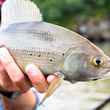
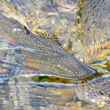
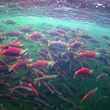
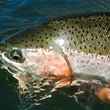


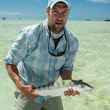



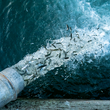
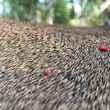



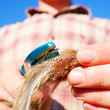
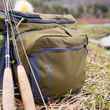



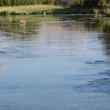
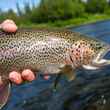



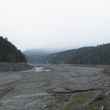

Comments
Tommy replied on Permalink
Nice article, and important stuff, but seeing one of your favorite creeks that always provides solitude named on a national website never feels good...
Mike DeClue replied on Permalink
In the late 70’s and early 80’s I used to fish the Bear River below the Narrows Reservoir from the dam to the Utah line. It was full of large Bonneville cuts along with large Browns and Rainbows. I moved away and went back to fish this section and it was almost dry, what a destruction of a great fishery.
Pages